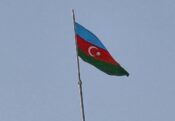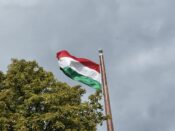7世紀~イスラムの誕生と唐の繁栄~The Birth of Islam and the Prosperity of the Tang Dynasty

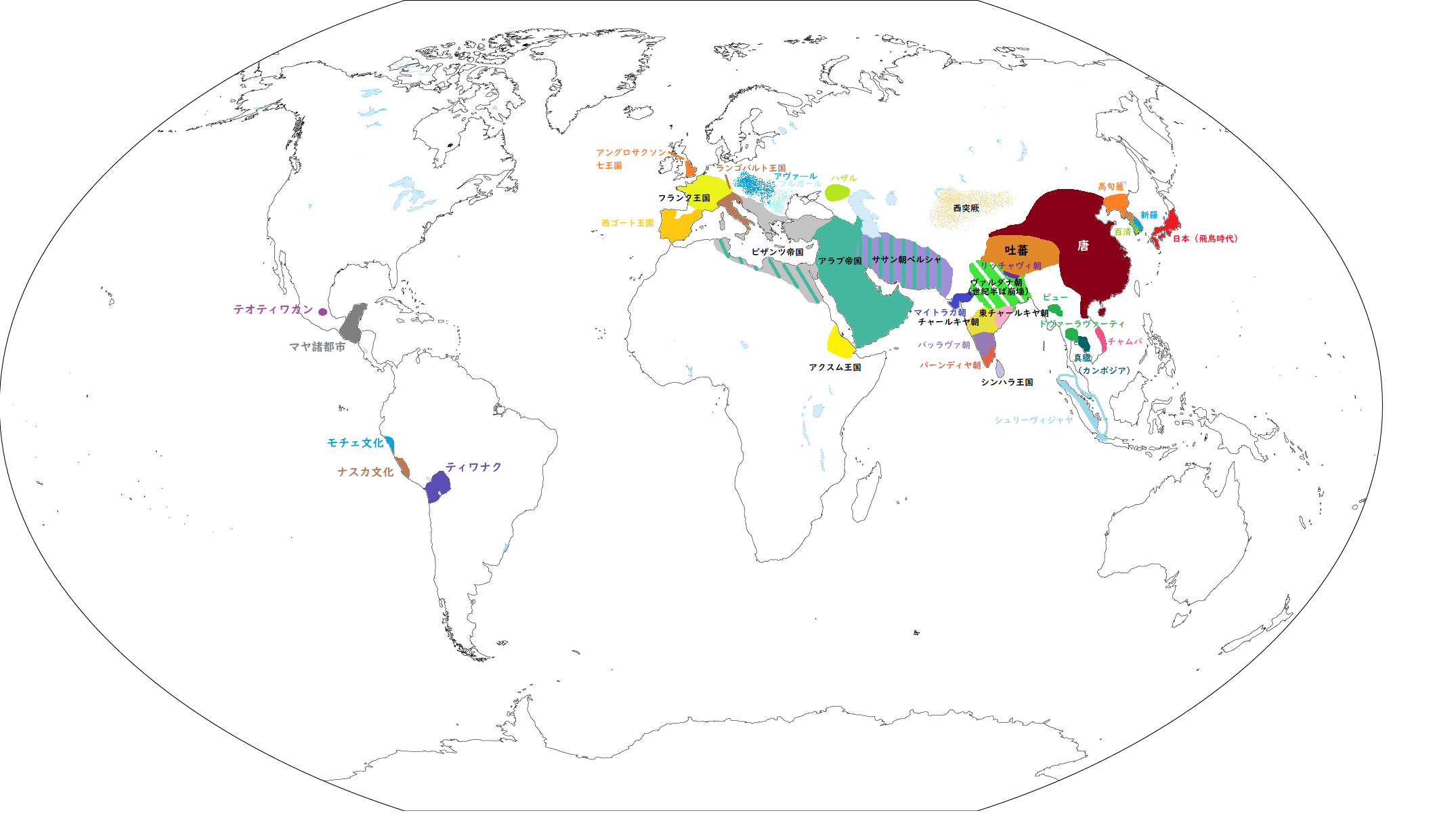
前(6世紀~復活する大帝国~) ← → 次(8世紀~フランク、大仏、アラビアンナイト~)
7世紀は大きな変革の時代でした。中国では唐が成立し、東アジア世界にも大きな影響を与えました。日本でも大化の改新が始まり、天皇中心の本格的な国が築かれました。しかし何といっても最大の変化は、西アジアでイスラム教が誕生したことでしょう。
The 7th century was a period of significant transformation. In China, the Tang dynasty was established, exerting a profound influence on the East Asian world. In Japan, the Taika Reform began, laying the foundation for a centralized state centered around the emperor. However, the most remarkable change was the birth of Islam in West Asia.
西アジア
西アジアではビザンツ帝国が西側を、ササン朝ペルシャ帝国が東側に勢力を張り、互いに覇権を争って戦争を繰り返していました。その結果7世紀初頭には両国とも疲弊し、西アジアで権力の空白が生じていました。あら日は半島の宗教都市メッカで生まれ育った商人ムハンマドが”神の啓示”を受けてイスラム教を開いたとされるのは、ちょうどこの頃(610年頃)のことと言われています。
In West Asia, the Byzantine Empire dominated the western region while the Sasanian Persian Empire controlled the eastern side. These two powers repeatedly clashed in wars over supremacy. By the early 7th century, both empires had become exhausted, creating a power vacuum in West Asia. It was around this time, in the religious city of Mecca on the Arabian Peninsula, a merchant named Muhammad had received “divine revelations” and founded Islam, approximately in 610.
この後メッカで迫害を受けたムハンマドとその信徒たちは、メッカより北にあるメディナへ逃れてイスラムの共同体(ウンマ)を立ち上げました。これをヒジュラ(聖遷)といい、ヒジュラのあった西暦622年は、イスラム暦の元年となっています。メディナで名声を得たムハンマドは、630年メッカの制圧に成功。カーバ神殿にあった石像を破壊して、イスラムの聖地としました。
After this, Muhammad and his followers, who were persecuted in Mecca, fled to Medina, which was located north of Mecca, and established the “Ummah” (Islamic community). This event is called the “Hijra” (migration). The year 622 CE, when the Hijra took place, became the first year of the Islamic calendar. Muhammad, who gained fame in Medina, successfully conquered Mecca in 630. He destroyed the idols in the Kaaba and established it as an Islamic holy site.
砂漠で遊牧生活を送っていたアラブ人はこの業績を耳にし、ムハンマドと主従関係を結びます。しかしムハンマドが632年死去すると、契約は切れたとウンマから離脱する者が続出。ムハンマドを継いだカリフ(イスラムのトップ)たちは、アラビア半島より豊かな地への征服活動によって、これを防ごうとしました。
The Arabs, who lived a nomadic life in the desert, heard of this achievement and formed a master-servant relationship with Muhammad. However, after Muhammad passed away in 632, many left the Ummah, claiming that their contract had ended. The caliphs (Islamic leaders) who succeeded Muhammad sought to prevent this by launching conquests into lands richer than the Arabian Peninsula.
この時代から見ても3000年以上文明を築いてきたメソポタミア(イラク)やシリア、エジプトなどは、砂漠だらけのアラビアより魅力的な土地で、630年代ラクダに乗ったアラブ戦士たちはこぞってこれらの地に侵入。東側では642年のニハーヴァンドの戦いで、弱体化していたササン朝に勝利。メソポタミア地方を征服します。首都を失い、ガタガタになったササン朝は、651年滅亡しました。西側ではビザンツ帝国の支配下にあったシリア、パレスティナ、エジプトなどを7世紀半ばに奪い、やっぱり大勢のアラブ人がここへ移住していきます。
Even from this era’s perspective, Mesopotamia (Iraq), Syria, and Egypt, which had built civilizations for over 3,000 years, were more attractive lands than the desert-covered Arabia. In the 630s, Arab warriors on camels eagerly invaded these regions. On the eastern front, they defeated the weakened Sassanid Empire in the Battle of Nihavand in 642, conquering the Mesopotamian region. The Sassanid Empire, having lost its capital and in disarray, fell in 651. On the western front, they seized Syria, Palestine, and Egypt from Byzantine control by the mid-7th century, and many Arabs migrated to these areas.
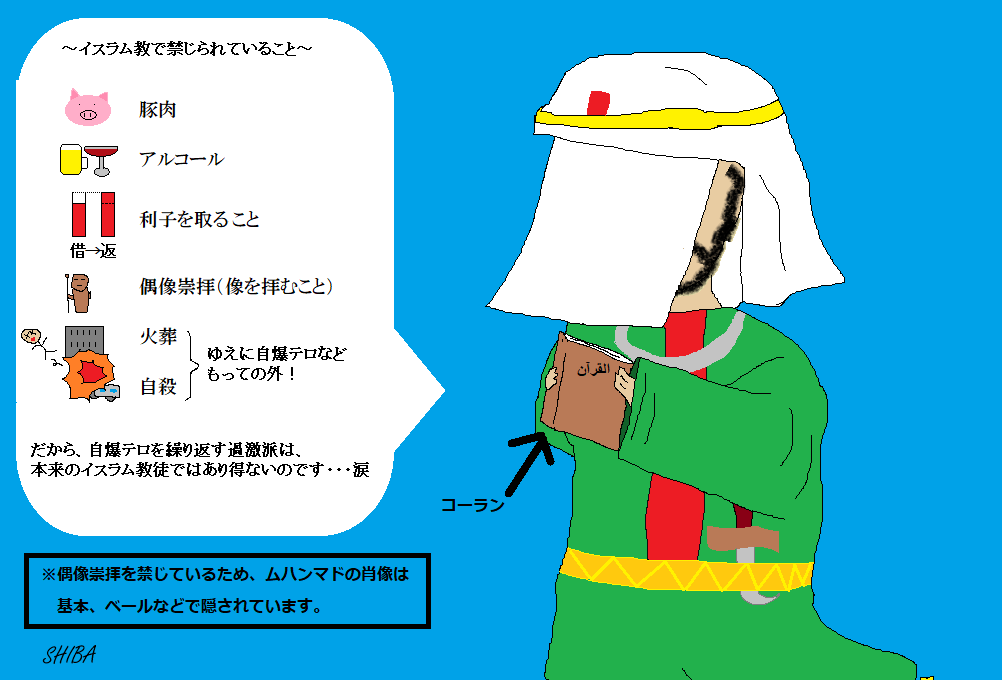
同じ頃、ムハンマドの教えが聖典としてまとめられました。これがコーランです。コーランはアラビア語で書かれていたこともあって、イスラムとともにアラビア語もまた、イラクやエジプトへと広まっていきました。
Around the same time, Muhammad’s teachings were compiled into a holy book. This became the “Quran”. As the Quran was written in Arabic, along with Islam, the Arabic language also spread to Iraq and Egypt.
7世紀後半になると、今度はイスラム共同体の内部でも権力や政策をめぐる争いが激化。その最大のものは、4代目カリフとなったアリーと、シリアに拠点を置いていたウマイヤ家のムアーウィアの対立でした(第一次内乱)。660年ムアーウィヤはダマスカス(ダマスクス 現シリア共和国の首都)でカリフを名乗り、ウマイヤ朝を開きます。
In the latter half of the 7th century, conflicts over power and policies intensified within the Islamic community. The most significant of these was the confrontation between Ali, who became the fourth Caliph, and Muawiyah of the Umayyad family, who was based in Syria (First Fitna). In 660, Muawiyah declared himself Caliph in Damascus (the current capital of Syria) and established the Umayyad dynasty.
その後の戦いで不利となったアリーは翌661年暗殺されますが、ここでイスラム教徒はウマイヤ朝のカリフを支持する人々と、アリーとその後継者を正統なカリフとする人々に分裂しました。この出来事が現在も続く、スンニ派とシーア派の二大宗派に繋がっていきます。
Ali, who was at a disadvantage in the subsequent battles, was assassinated in 661. At this point, Muslims split into two groups: those who supported the Umayyad Caliphs and those who considered Ali and his successors as the legitimate Caliphs. This event led to the formation of the two major sects that continue to exist today: “Sunni” and “Shia”.
東アジア
7世紀初頭、中国は隋王朝の時代でした。日本では蘇我氏と手を結んだ聖徳太子が、小野妹子を隋に派遣し、当時の皇帝、煬帝に謁見。この時に渡した文章が、「日出ずる国の天子、日没する国の天子へ挨拶申し上げます。」(訳:日が昇るように成長中な、東の国の「皇帝」(=中国の皇帝と同じ立場)が、最近落ち目な西の国の皇帝へ挨拶しますよ。)というものだったため、煬帝が怒ったというエピソードは有名です。
In the early 7th century, China was under the Sui(隋) Dynasty. In Japan, Prince Shotoku(聖徳太子), who had allied with the Soga(蘇我) clan, dispatched Ono no Imoko(小野妹子) to China. He had an audience with Emperor Yang(炀帝), the ruler of Sui at that time. The famous episode relates to the letter presented during this meeting, which read: ‘The Son of Heaven where the sun rises sends greetings to the Son of Heaven where the sun sets.’ (meaning: The ‘Emperor’ of the rising eastern country, growing like the rising sun, sends greetings to the Emperor of the western country, which is recently in decline.) This message angered Emperor Yang.
しかし実際のところ煬帝は、長江と黄河を結ぶ大運河を建設した際に民衆に重い負担を課し、朝鮮半島の高句麗への攻撃に失敗するなどして支持を失っていました。そして618年、酷使された農民が反乱を起こして隋は滅亡。李淵、李世民親子により唐が開かれました。2代目李世民(太宗)は、優れたブレーンを持ち、後の中国王朝にも通じる官僚制度を整えた名君と評されており、その治世は「貞観の治」として知られています。唐はこの先300年近く続くことになります。
However, in reality, Emperor Yang lost support by imposing heavy burdens on the people during the construction of the Grand Canal connecting the Yangtze and Yellow Rivers, and failing in his attack on Goguryeo(고구려/高句麗) on the Korean Peninsula. In 618, overworked farmers rebelled, leading to the fall of the Sui dynasty, and the Tang(唐) dynasty was established by Li Yuan(李渊) and his son Li Shimin(李世民). The second emperor, Li Shimin (Emperor Taizong:太宗), is regarded as a wise ruler who had excellent advisors and established a bureaucratic system that would influence later Chinese dynasties. His reign is known as the ‘Zhenguan Era(贞观之治).’ The Tang dynasty would continue for nearly 300 years.
話を日本に戻すと、聖徳太子は国内でも活躍。位の上下をわかりやすくした「冠位十二階の制」や、平和な社会を目指す心構えをまとめた「十七条の憲法」はとくに有名です。仏教を重んじた彼は晩年に法隆寺を建立しますが、これは現存する世界最古の木造建築として有名です。
Returning the topic to Japan, Prince Shotoku was also active domestically. He is particularly famous for the ‘Twelve Level Cap and Rank System,(冠位十二階)’ which made the hierarchy of ranks more comprehensible, and the ‘Seventeen-Article Constitution(十七条の憲法),’ which outlined the principles for a peaceful society. As a devout Buddhist, he built Horyuji Temple(法隆寺) in his later years, which is renowned as the world’s oldest existing wooden structure.
聖徳太子は622年に没し、彼のパトロン推古天皇も628年に崩御します。すると、蘇我氏が再び強大化し、天皇家の危機を感じた皇族の中大兄皇子は、部下の 中臣鎌足らとともに、645年クーデターで彼らを滅ぼしました。以後、天皇家を中心とした国づくりが始まりますが、これを大化の改新と呼びます。
Prince Shotoku passed away in 622, and his patron Empress Suiko(推古天皇) also died in 628. Subsequently, the Soga clan regained power, and Prince Naka no Oe(中大兄皇子), a member of the imperial family who sensed a crisis for the imperial household, along with his subordinate Nakatomi no Kamatari(中臣鎌足), overthrew them in a coup in 645. After that, the construction of a nation centered around the imperial family began, a process known as the Taika Reform(大化の改新).
その国家建設には唐の制度が大きく取り入れられ、それを学ぶための使節、つまり遣唐使が盛んに送られました。地方の有力者(豪族)は天皇の配下とされ、土地をすべて没収された後、役人として朝廷から給料をもらう立場となります(班田収授法)。また、一連の改革で中大兄皇子(即位後は 天智 天皇)を支えた 中臣鎌足は、晩年に「藤原」という姓をたまわり、藤原氏繁栄のいしずえとなりました。
The Tang Dynasty’s systems were heavily incorporated into this nation-building effort, and missions to Tang China, known as “Kentoshi(遣唐使)”, were frequently dispatched to study these systems. Local influential leaders were placed under the emperor’s authority, their lands confiscated, and they were positioned as government officials receiving salaries from the court (as part of the Handen-Shūju Law:班田収授法). Additionally, Nakatomi no Kamatari, who supported Prince Naka no Oe (later Emperor Tenji:天智天皇) during these reforms, was granted the surname ‘Fujiwara(藤原)’ in his later years, laying the foundation for the prosperity of the clan.
この頃朝鮮半島は三国時代にピリオドが打たれます。隋の攻撃を防いだ高句麗は、続く唐の出現にも対応を迫られました。この結果642年淵蓋蘇文がクーデターで事実上の統治者となり、独裁を敷きました。一方の新羅は唐との関係を強化し、花郎出身の軍人金庾信ら名将の活躍もあって660年ついに百済を打倒しました。
During this period on the Korean Peninsula, The Three Kingdoms period came to an end. In Goguryeo(고구려/高句麗), which had repelled attacks from the Sui dynasty, the emergence of the Tang dynasty posed a new challenge. As a result, in 642, Yeon Gaesomun(연개소문/淵蓋蘇文) staged a coup and became the de facto ruler, establishing a dictatorship. Silla(신라/新羅) strengthened its relationship with Tang China. With the help of talented military leaders from the Hwarang(화랑/花郎) such as Kim Yu-shin( 김유신/金庾信), Silla finally defeated Baekje(백제/百濟) in 660.
同盟国の日本に亡命した百済勢力は再起を図り、日本軍と共に新羅・唐軍と戦いましたが、663年白村江の戦いで敗北し、百済復活の夢は潰えました。新羅は文武王治世の668年、残る高句麗(淵蓋蘇文はすでに死去)も滅ぼし、史上初めて朝鮮半島を統一します。
The Baekje forces, which had fled to their ally Japan, attempted to make a comeback. They fought alongside the Japanese army against the Silla-Tang alliance but were defeated in the Battle of Baekgang(백강/白村江) in 663, crushing their dreams of reviving Baekje. Under King Munmu(문무왕/文武王)’s reign, Silla conquered the remaining Goguryeo (Yeon Gaesomun has already passed away) in 668, unifying the Korean Peninsula for the first time in history.
同じ668年、日本では天智天皇が死去し、その弟と息子の間で権力争いが生じました。672年壬申の乱で勝利して即位したのが、弟の 天武 天皇でした。「日本」という国名や「天皇」という地位の名前が実際に使われるようになるのは、彼の時代からと考えられています。
In the same year of 668, Emperor Tenji passed away in Japan, leading to a power struggle between his brother and son. In 672, his brother emerged victorious in the Jinshin War(壬申の乱) and ascended to the throne as Emperor Tenmu(天武). It is believed that the country name ‘Nippon(日本:Japan)’ and the title ‘Tenno(天皇:Emperor of Japan)’ came into actual use during his reign.
こうして新たな段階に入った日本と新羅ですが、どちらの国にとっても巨大な唐の存在は無視できないものでした。日本は白村江の戦いでのトラウマから、大陸に近い九州北部の防衛を固める必要に迫られました。これが防人で、8世紀以降本格化されますが、兵士として駆り出される農民にとっては重い負担となりました。
As Japan and Silla entered a new phase, but both countries could not ignore the presence of the mighty Tang dynasty. Traumatized by the Battle of Baekgang, Japan was compelled to strengthen the defenses of northern Kyushu(九州) island, which was close to the continent. This led to the establishment of the sakimori(防人:border guards system), which was fully implemented from the 8th century onwards. However, this became a heavy burden for the farmers who were conscripted as soldiers.
新羅では、統一したばかりの朝鮮半島を唐が支配しようとしたため、やっぱり争いに。新羅は唐の軍をなんとか撤退させますが、これ以上の関係悪化を防ぐために、唐の属国として貢物などを送るようになりました。これを冊封体制と呼びます。
In Silla, conflict arose when Tang attempted to dominate the newly unified Korean Peninsula. Although Silla managed to repel the Tang forces, to prevent further deterioration of relations, they began sending tributes to Tang as a vassal state. This system is known as the ‘Tributary system(册封体制)’.
唐はほかにも東南アジアや中央アジアの国とも同様の関係を結び、東アジアの親分的存在となりました。そして都の長安から遠く離れたこれらの地において監視役や、貿易拠点の役割を果たしたのが「都護府」と呼ばれる機関でした。例えば中国より南ににらみを利かせた安南都護府は、現在のベトナムに置かれています。
Tang established similar relationships with countries in Southeast Asia and Central Asia, becoming the dominant power in East Asia. The ‘Duhufu’ (都护府/Protectorate Generals) were institutions that acted as supervisors and trade hubs in these distant lands far from the Tang capital of Chang’an(长安). For example, the Annam-Duhufu(安南都护府), which kept watch over the regions south of China, was established in present-day Vietnam.
唐という巨大王朝が出現したことで、シルクロードを経由した交易も更に盛んになります。この往来を担ったソグド人は、唐でも「胡人」として活躍。高級官僚になった者もいました。この時代にはゾロアスター教なども西から中国に伝わっています。
With the emergence of the powerful Tang dynasty, trade along the Silk Road became even more prosperous. The Sogdians, who played a key role in this exchange, were active in Tang China as “Hu people”, and some even rose to the rank of high-ranking officials. During this period, religions such as Zoroastrianism were also introduced to China from the West.
東南アジア・インド・チベット
インドではバラバラな状態が続いていましたが、7世紀にはハルシャ王によるヴァルダナ朝が強大化し、北インドを統一しました。中国の仏僧玄奘もこの王の歓迎を受けています。玄奘がインドまで修行に行った記録が、後に『西遊記』の元となりました。7世紀後半には同じく中国の仏僧義浄がインドを訪れ、この地で修行していますが、彼が訪れた時にはすでにハルシャ王は没しており、ヴァルダナ朝も崩壊していました。
In India, a fragmented state persisted, but the Vardhana Dynasty, led by King Harsha, grew powerful and unified North India in the first half of the 7th century. The Chinese Buddhist monk Xuanzang(玄奘) was welcomed by this king. Xuanzang’s record of his journey to India for training later became the basis for “Journey to the West(西遊記)”. In the latter half of the 7th century, another Chinese Buddhist monk, Yijing(義浄), visited India for training. However, by the time he arrived, King Harsha had already passed away and the Vardhana Dynasty had collapsed.
なお、玄奘や義浄がやって来た頃のインドでは、仏教はすでに衰退傾向にあり、ヒンドゥー教が代わって社会に根を下ろしていました。インドで仏教を信じていたのは、主にクシャトリヤ(貴族)層が中心で、それに対しヒンドゥー教は人口では多数派の庶民の間で人気があったからです。特に南インド(当時はチャールキヤ朝やパッラヴァ朝などが繁栄)では、ヒンドゥーの神様にトコトンすがることで救いを求める「バクティ運動」が盛んになっていきました。この動きは時間をかけて北インドにも広まっていきます。
During the time when Xuanzang and Yijing came to India, Buddhism was already in decline, and Hinduism was taking root in society instead. In India, Buddhism was mainly revered by the Kshatriya (nobility) class, while Hinduism was popular among the majority of the common people. Particularly in South India (where the Chalukya and Pallava dynasties were flourishing at the time), the “Bhakti movement,” which sought salvation through complete devotion to Hindu deities, became prevalent. This movement gradually spread to North India over time.
ヒマラヤ山脈のチベットでは、吐蕃という国がソンツェン・ガンポ王の元で大きくなります。彼は唐の皇帝太宗や、ネパールの君主アンシュ・ヴァルマーとの婚姻関係でつながり、中国やインドの文化を吸収していきました。
In Tibet, the first half of the 7th century, the Tibetan Empire grew under King Songtsen Gampo. He established marital ties with Emperor Taizong(太宗) of the Tang(唐) Dynasty and Amshuverma, the ruler of Nepal, absorbing Chinese and Indian cultures.
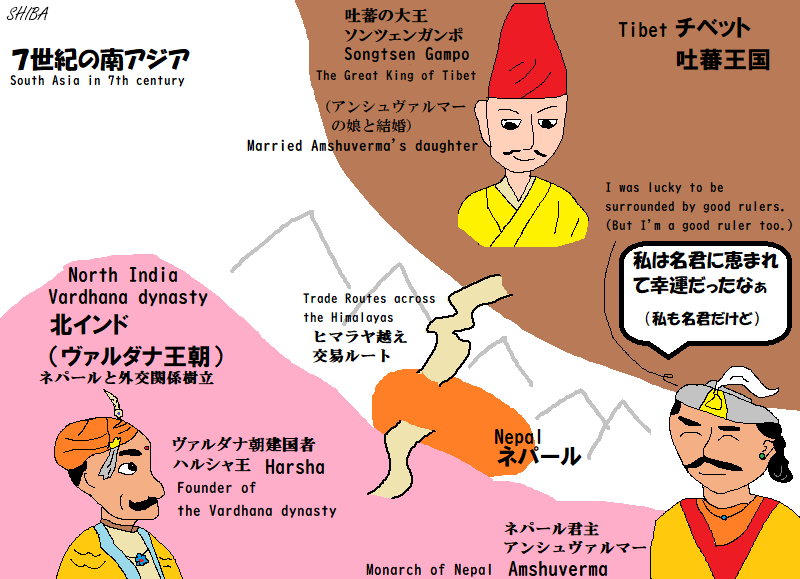
世界史に(あまり)出てこない国の歩み~ネパールの歴史~ より
そのアンシュ・ヴァルマーが治めたネパールのリッチャヴィ朝も、インドとチベットの中継地として栄え、仏教文化、ヒンドゥー教が開花しました。リッチャヴィ朝の最盛期です。
The Licchavi dynasty of Nepal, ruled by Amshuverma, flourished as an intermediary between India and Tibet, leading to the blossoming of Buddhist and Hindu cultures. This marked the peak of the Licchavi dynasty.
海のシルクロードを経て発展してきた東南アジアにおいては、多数の港町(港市国家)が出現していました。特にマラッカ海峡では、海峡の両岸にあった都市がまとまり、より大きな国になっていきます。このシュリーヴィジャヤは、現在のマレー半島とスマトラ島にまたがる国で、海を挟みながらも一つの世界を造り上げていきました。前述の義浄も、行きと帰りにシュリーヴィジャヤの都パレンバンを訪れています。
In Southeast Asia, which developed through the Maritime Silk Road, numerous port city-states emerged. Particularly in the Strait of Malacca, cities on both sides of the strait united to form larger nations, Srivijaya; spanning across present-day Malay Peninsula and Sumatra Island, created a unified world despite being separated by sea. The aforementioned Yijing also visited Palembang, the capital of Srivijaya, on both his outward and return journeys.
インドシナ半島では、それまで中国とインドとの中継貿易を担っていた扶南が衰退。代わってこの地にはクメール人の王国、すなわちカンボジア王国が台頭してきます。なお、この国は当時の中国(唐)の文書に「真臘」という名前で出てきます。
In the Indochina Peninsula, Funan, which had previously handled intermediary trade between China and India, declined. In its place, the Khmer kingdom, known as the Cambodian kingdom, rose to prominence. This country was referred to as “Chenla(真臘/真腊)” in Chinese (Tang dynasty) documents of the time.
ヨーロッパ
中部~東ヨーロッパでは、ゲルマン民族の争いに輪をかけるように遊牧民アヴァールの侵入が続き、ヨーロッパ内陸部に大帝国を築きます。彼らにくっつくような形でスラヴ人が入ってきます。現在のポーランドやチェコ、セルビアなどで多数派となっている人々です。7世紀末に入ってきた遊牧民ブルガール族も、スラヴ文化を受け入れ、後にバルカン半島の強国となるブルガリア王国を築きました。
In Central and Eastern Europe, the invasion of the nomadic Avars intensified, compounding the conflicts among Germanic tribes. The Avars built a vast empire in the European interior. Slavic people followed in their wake, becoming the majority in present-day Poland, Czech Republic, and Serbia. The nomadic Bulgars, who arrived in the late 7th century, adopted Slavic culture and later established the powerful Bulgarian Kingdom in the Balkans.
アヴァールはまた、一時的にビザンツ帝国の都コンスタンティノープルをも包囲しましたが、皇帝ヘラクレイオスによって撃退されました。ヘラクレイオスは、北ではアヴァールと戦い、南ではササン朝と戦っていました。630年代苦心の末ササン朝からシリア地方を取り戻した彼はしかし、すぐに新興勢力イスラムの攻撃を受け、取り戻したばかりのこの地を手放すことになります。
The Avars briefly besieged Constantinople, the capital of the Byzantine Empire, but were repelled by Emperor Heraclius. He fought against the Avars in the north and the Sassanids in the south. After reclaiming Syria from the Sassanids in the 630s, he soon lost it to the emerging Islamic forces.
西ヨーロッパでは、メロヴィング朝フランク王国が最大の国でしたが、フランク人の間には複数の息子がいれば財産を均等に相続させるという風習があり、その結果分裂と統合を繰り返していました。イタリア北部ではゲルマン系ランゴバルト王国が拡大し、ローマ教皇やビザンツ帝国を脅かしました。
In Western Europe, the Merovingian Frankish Kingdom was the largest state. However, due to the Frankish custom of equally dividing inheritance among sons, the kingdom repeatedly fragmented and reunified. In northern Italy, the Germanic Lombard Kingdom expanded, threatening the Roman Pope and the Byzantine Empire.
イベリア半島はゲルマン系西ゴート王国のもとにありました。しかしこの地に住む多くの住民は、ローマ時代から続くラテン系の人々。支配層のゲルマン人と現地住民のラテン人との間には別々の法律が使われるなど長い間溝がありました。これに対し654年、時のレケスウィント王が出した西ゴート法典は、両住民に同じ法律を適用するもので、これは両者の差が薄れていた時代背景を反映したものでした。しかし西ゴート王国の命運は間もなく尽きることとなります。イスラム勢力は7世紀末このイベリア半島のすぐ近くにまで来ていたからです。
The Iberian Peninsula was under the Germanic Visigothic Kingdom. However, most inhabitants were Latin people from the Roman era. For a long time, separate laws applied to the Germanic ruling class and the local Latin population. In 654, King Recceswinth issued the Visigothic Code, which applied the same laws to both groups, reflecting the diminishing differences between them. However, the Visigothic Kingdom’s fate was soon to run out. Islamic forces approached the Iberian Peninsula by the end of the 7th century.
~主な出来事~
604 聖徳太子、十七条の憲法を制定(日本)
607 小野妹子、隋の皇帝煬帝のもとへ派遣(日本/中国)
610頃 ムハンマド、イスラム教開く(西アジア)
612 ヴァルダナ朝のハルシャ、北インド統一(インド)
618 隋滅亡 唐成立(中国)
622 ムハンマド、メッカで迫害激しくなり、メディナへ亡命(ヒジュラ)(西アジア)
626 唐で太宗(李世民)即位。貞観の治始まる(中国)
629 玄奘、インドへ向けて長安を出発(アジア)
629 吐蕃でソンツェン・ガンポ即位(チベット)
630 ムハンマド、メッカ制圧。アラビア半島の諸部族を従える(西アジア)
632 ムハンマド没(西アジア)
642 イスラム、ニハーヴァンドの戦いでササン朝を破る(西アジア)
642 淵蓋蘇文が高句麗の実権を握る(朝鮮半島)
645 大化の改新始まる(日本)
651 ササン朝滅亡(西アジア)
660 新羅が百済を滅ぼす(朝鮮半島)
661 ムアーウィアによりウマイヤ朝成立(中東)
663 白村江の戦い 新羅・唐連合軍、日本・百済軍を破る(東アジア)
672 壬申の乱 天武天皇が即位(日本)
676 新羅の文武王、朝鮮半島統一(朝鮮半島)
681 アスパルフ、第一次ブルガリア王国建国(東ヨーロッパ)
604 Prince Shōtoku establishes the Seventeen-Article Constitution (Japan)
607 Ono no Imoko is dispatched to Emperor Yang of Sui (Japan/China)
Around 610 Muhammad founds Islam (West Asia)
612 Harsha of the Vardhana dynasty unifies North India (India)
618 Sui dynasty falls, Tang dynasty established (China)
622 Muhammad flees to Medina due to increased persecution in Mecca (Hijra) (West Asia)
626 Emperor Taizong ascends the throne in Tang China.
629 Xuanzang departs Chang’an for India (Asia)
629 Songtsen Gampo ascends the throne in Tibet
630 Muhammad conquers Mecca. Arabian tribes submit to him (West Asia)
632 Muhammad past away (West Asia)
642 Muslims defeat the Sassanid Empire at the Battle of Nihavand (West Asia)
642 Yeon Gaesomun seizes power in Goguryeo (Korea)
645 Taika Reform begins (Japan)
651 Fall of the Sassanid Empire (West Asia)
660 Silla destroys Baekje (Korea)
661 Muawiyah establishes the Umayyad Caliphate (West Asia)
663 Battle of Baekgang – Silla-Tang allied forces defeat Japanese-Baekje forces (East Asia)
672 Jinshin War – Emperor Tenmu ascends the throne (Japan)
676 King Munmu of Silla unifies the Korean Peninsula (Korea)
681 Asparuh establishes the First Bulgarian Empire (Eastern Europe)
前(6世紀~復活する大帝国~) ← → 次(8世紀~フランク、大仏、アラビアンナイト~)






